In a world often marked by discord, the human spirit persistently seeks harmony, and unity. Across diverse cultures and throughout history, we have created powerful symbols to represent these universal ideals. These symbols of harmony serve as visual reminders of our aspirations for peace and equilibrium,transcending language barriers.
This comprehensive guide explores 14 iconic symbols of harmony, delving into their origins,and significance in both ancient traditions and contemporary culture. From the ancient Yin and Yang of Chinese philosophy to the modern Peace Sign born from the anti-war movement. .
Join us on this journey through art, spirituality, and cultural expression as we examine how these powerful symbols continue to shape our understanding of balance and unity in the modern world.
The Power of Symbols in Representing Harmony
Human beings are inherently visual creatures, with an innate ability to process and interpret complex ideas through simple images. This cognitive trait has given rise to the creation and use of symbols throughout our history. Symbols of harmony hold a special place in this visual language, as they encapsulate profound concepts of peace, balance, and unity in forms that can be instantly recognized and understood.
The power of these symbols lies in their ability to condense complex philosophical, spiritual, and cultural ideas into simple, memorable forms. A single image can evoke emotions, trigger memories, and communicate values that might otherwise require lengthy explanations. In a globalized world where communication often transcends language barriers, harmony signs and unity motifs serve as a universal vocabulary.
In the Art and culture
They become recurring motifs in visual arts, literature, and music, serving as touchstones for creators and audiences alike. From ancient cave paintings to modern corporate logos, symbols of harmony have been woven into the fabric of human expression, constantly evolving while retaining their core meanings.
As we explore each of the 14 symbols in this guide, we’ll see how they have been adapted and reinterpreted across time and cultures, yet continue to resonate with fundamental human desires for peace, balance, and interconnectedness.
1. Yin and Yang
The concept of Yin and Yang stands as one of the most recognizable and profound symbols of harmony in global culture. Originating in ancient Chinese philosophy, this elegant symbol represents the fundamental duality of the universe and the balance of opposing forces.

The Yin and Yang symbol consists of a circle divided into two teardrop-shaped halves one black (Yin) and one white (Yang). Within each half is a small circle of the opposite color, suggesting that each force contains the seed of its opposite. e
This visual representation elegantly captures the idea that seemingly contrary forces can be complementary, interconnected, and interdependent in the natural world.
In Taoist philosophy, Yin represents qualities like darkness, femininity, passivity, and the earth. In contrast, Yang embodies light, masculinity, activity, and the heavens. The symbol illustrates that these forces are not static; they are in constant flux, each transforming into the other in an eternal cosmic dance.
The influence of Yin and Yang extends far beyond its origins in Chinese thought. It has become a cornerstone of traditional Chinese medicine, martial arts, and feng shui. In Western culture, the symbol has been adopted as a popular motif in art, fashion, often used to represent balance, harmony, and holistic approaches to life and health.
The enduring appeal of the Yin and Yang symbol lies in its simple yet profound representation of universal truths. It reminds us that harmony often arises not from the elimination of differences, but from their balance and integration.
Read More : Mars in Leo : The Great Performer
2. Peace Sign
Few symbols have achieved the global recognition and impact of the Peace Sign. This simple yet powerful emblem has transcended its origins as an anti-nuclear weapon symbol to become a universal icon of peace, harmony, and non-violence.
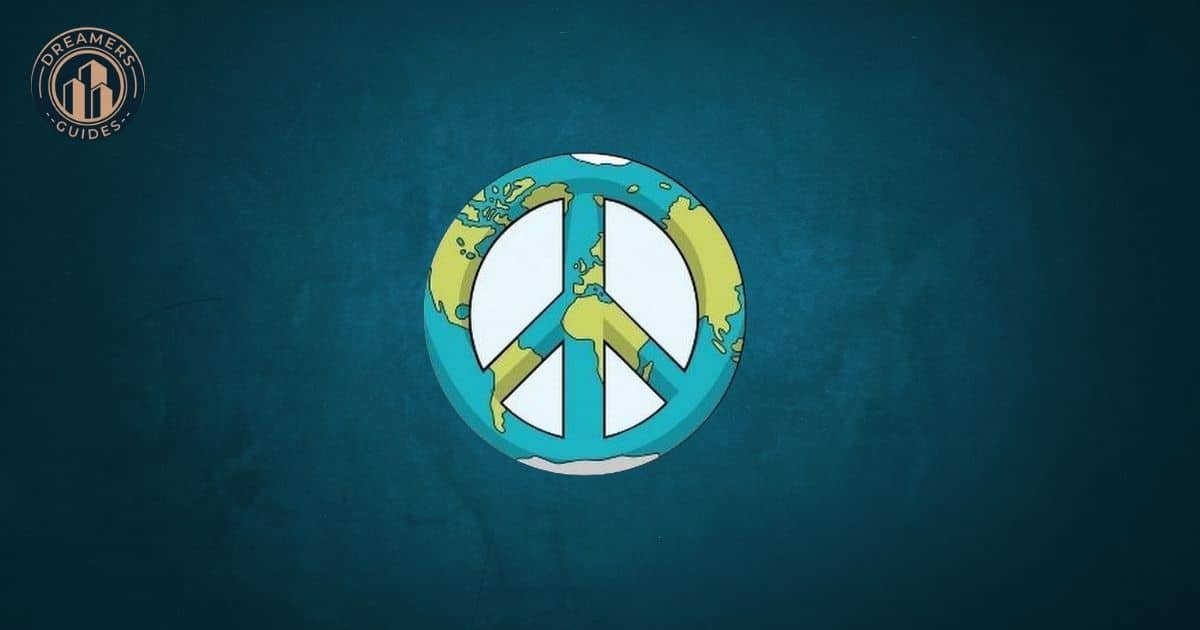
The Peace Sign was created in 1958 by British artist Gerald Holtom for the Campaign for Nuclear Disarmament (CND). Holtom’s design ingeniously combined the semaphore letters ‘N’ and ‘D’ (for Nuclear Disarmament) within a circle.
The symbol quickly gained traction in the anti-war movement of the 1960s, particularly in the United States during the Vietnam War era. It became a hallmark of the counterculture, adorning everything from protest signs to clothing and album covers.
Broader concept of harmony
Over time, the Peace Sign evolved beyond its anti-war roots to represent a broader concept of harmony and non-violence. . The symbol’s ability to convey a message of peace and unity without words has made it a powerful tool for global communication.
Today, the Peace Sign remains a ubiquitous presence in popular culture. It appears in fashion, art, and design, often reinterpreted and reimagined while retaining its core message. From corporate marketing campaigns to personal expressions of individual values, the Peace Sign continues to serve as a visual shorthand for harmony.

The enduring popularity of the Peace Sign is a testament to humanity’s persistent desire for harmony and non-violence, even in the face of conflict and division. As a symbol of harmony, it serves as a constant reminder of our collective aspiration for a more peaceful coexistence.
Read More : Goat Symbolism & Meaning: The Ultimate Guide
3. Dove
The dove, with its pure white feathers and gentle demeanor, has long stood as one of the most widely recognized peace symbols across various cultures and traditions. This bird’s association with harmony, hope, and new beginnings traces back to ancient times and continues to resonate in modern symbolism.

The dove’s role as a peace symbol finds its roots in the biblical story of Noah’s Ark. According to the narrative, after the great flood, Noah released a dove which returned with an olive branch, signaling the receding of the waters and God’s reconciliation with humanity.
La Colombe
In the 20th century, the symbolism of the dove was powerfully reinforced by Pablo Picasso’s lithograph “La Colombe” (The Dove), created for the World Peace Congress in 1949. Picasso’s simple, elegant representation of a dove carrying an olive branch became an iconic image, widely adopted by peace movements around the world.
In American culture, the dove continues to be a potent symbol of peace . It is often released at weddings, funerals, and other ceremonies as a gesture of hope and new beginnings. The dove also appears frequently in political imagery, particularly in times of war or international tension, as a call for peaceful resolution of conflicts.
The gentle nature of doves, their monogamous mating habits, and their soft, soothing coos all contribute to their perception as creatures of peace. This natural association has made the dove an enduring and versatile symbol, capable of conveying messages of harmony, hope, and reconciliation across cultural and linguistic boundaries.
As a symbol of harmony, the dove reminds us of the possibility of peace even in times of turmoil. Its flight represents our aspirations for a world free from conflict, where gentleness and understanding prevail over force and aggression.
4. Lotus Flower
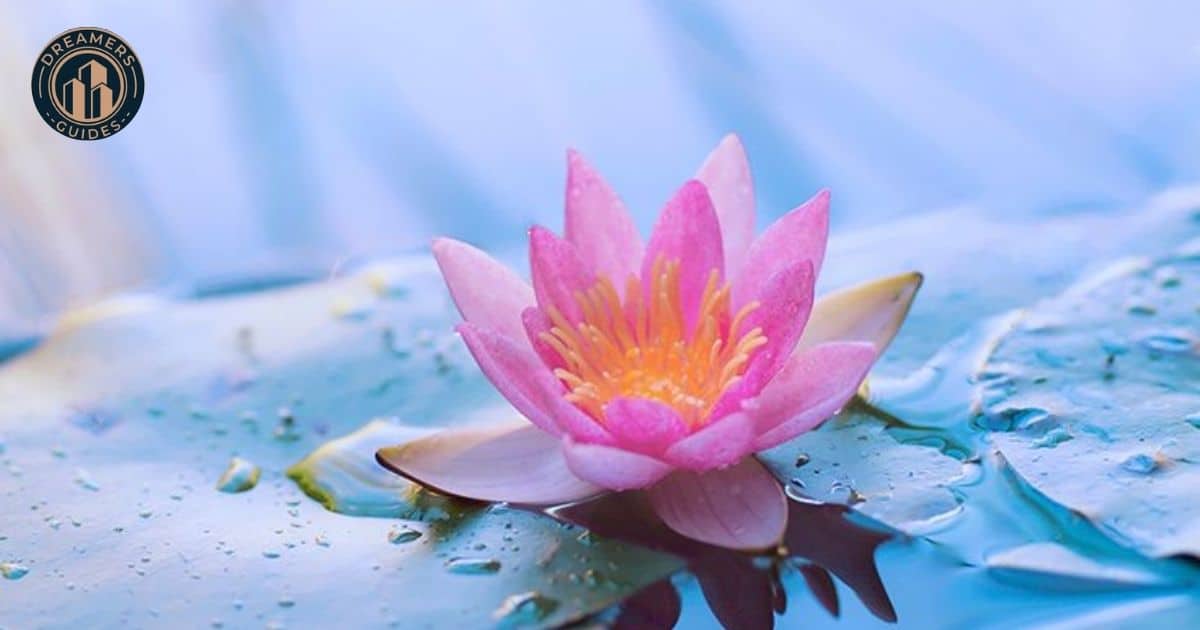
The lotus flower stands as one of the most profound and multi-layered spiritual symbols in Eastern traditions, embodying ideas of purity, enlightenment, and the journey to harmony. Its significance stems from its unique life cycle rooted in muddy waters, the lotus rises above the surface to bloom in immaculate beauty.
In Buddhism, the lotus is a central symbol representing the purity of body, speech, and mind. The Buddha is often depicted seated on a lotus throne, symbolizing his transcendence of the material world. The different stages of the lotus’s growth from bud to full bloom are used as metaphors for the stages of spiritual awakening.
Hinduism also reveres the lotus, associating it with many deities, especially Brahma and Lakshmi. The unfolding petals symbolize the expansion of the soul. Additionally, the flower’s ability to remain pure despite growing in muddy waters represents spiritual purity amid worldly challenges.
In Egyptian mythology
In Egyptian mythology, the lotus was associated with rebirth and the sun, playing a role in creation myths. This connection to rebirth and renewal has made the lotus a popular symbol in various spiritual and philosophical traditions beyond its Eastern origins.
The lotus has found its way into Western art and design, often used to represent growth, transformation, and the pursuit of inner peace. In modern wellness and mindfulness practices, the lotus is frequently used as a symbol of personal growth and the ability to rise above life’s difficulties to achieve harmony and balance.
As a symbol of harmony, the lotus reminds us that beauty and purity can emerge from challenging circumstances. It encourages us to strive for personal growth and spiritual enlightenment, rising above the “muddy waters” of everyday life to achieve a state of inner peace and balance.
The lotus flower’s journey from the depths to the surface serves as a powerful metaphor for the human quest for harmony and self-realization. Its ability to bloom untainted by its surroundings offers hope and inspiration, suggesting that we too can achieve purity and enlightenment regardless of our circumstances.
Read More : Wind Symbolism Across Cultures and Religions Around The World
5. Tree of Life
The Tree of Life is a powerful and versatile symbol that appears in various forms across numerous cultures and religious traditions. As a symbol of harmony, it represents the interconnectedness of all life, the balance between different realms of existence, and the cyclical nature of growth and renewal.
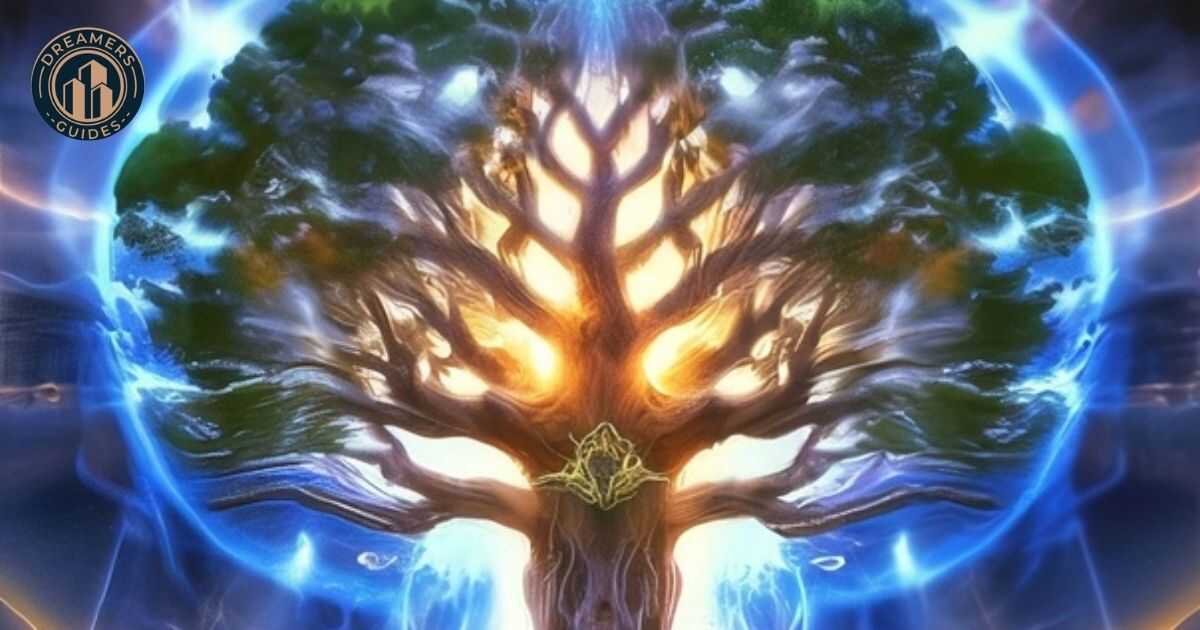
In many ancient mythologies, the Tree of Life is depicted as a colossal tree that connects the underworld, the earth, and the heavens. Its roots delve deep into the earth, symbolizing our connection to the physical world and our ancestors. The trunk represents the present, our lived experience in the material world.
Norse mythology features Yggdrasil, an immense ash tree that connects the nine worlds of their cosmology. In Kabbalah, the Jewish mystical tradition, the Tree of Life represents the path to spiritual enlightenment. Many Native American cultures have their own versions of the Tree of Life, often associating it with the four cardinal directions and the balance of natural forces.
The symbolism of the Tree of Life extends beyond spiritual realms. In biology, it represents the evolutionary relationships between all living organisms. This scientific use of the tree metaphor underscores the symbol’s power to represent complex interconnections and shared origins.
Modern times
In modern times, the Tree of Life has become a popular motif in art, jewelry, and tattoos. Its appeal lies in its rich symbolism and its ability to represent personal growth, family connections, and the cyclical nature of life and death. The symbol resonates with those seeking to express their connection to nature or their cultural heritage.
As a harmony sign, the Tree of Life reminds us of our place within the greater web of existence. It encourages us to seek balance between our earthly roots and our spiritual aspirations, between our past and our future. The tree’s cyclical nature shedding leaves in autumn and sprouting new growth in spring serves as a metaphor for life’s constant renewal and the harmony of natural cycles.
The Tree of Life symbol invites us to consider our connections to the earth, to our ancestors, to all living beings, and to the greater universe. It suggests that true harmony comes from recognizing and nurturing these connections, finding our place within the greater whole of existence.
Read : Summer Symbolism in Cultures and Arts Around The World
6. Mandala
The mandala, a circular geometric design filled with intricate patterns and symbols, stands as one of the most visually striking and spiritually significant symbols of harmony in world cultures. Originating in Hindu and Buddhist traditions, the mandala has transcended its religious roots to become a universal symbol of wholeness, unity, and the cosmic order.
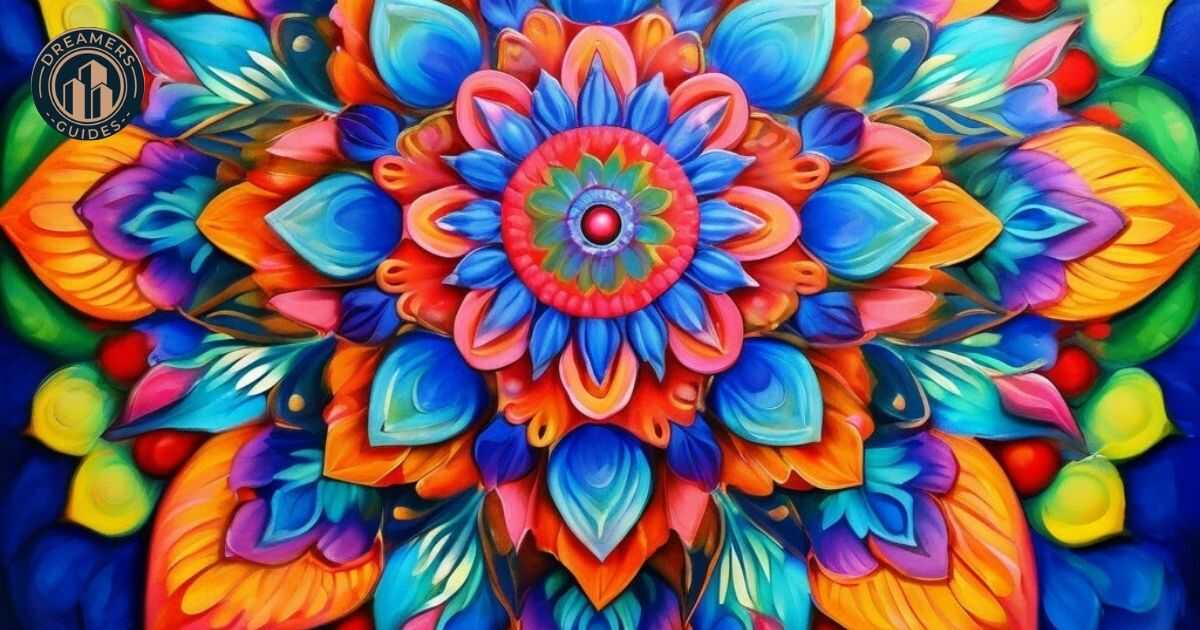
In Sanskrit, “mandala” means “circle,” but its spiritual significance goes far beyond its geometric shape. In Hindu and Buddhist practices, mandalas are used as aids for meditation and as representations of the universe. The creation and contemplation of mandalas are believed to help focus the mind, promote spiritual growth, and facilitate a journey towards enlightenment.
The structure of a mandala typically consists of a central point surrounded by symmetrical patterns radiating outwards. This design is not arbitrary but deeply symbolic.The surrounding patterns symbolize various aspects of the universe or stages of spiritual development.
Carl Jung
Carl Jung, the renowned Swiss psychiatrist, recognized the psychological significance of mandalas. He observed that patients often spontaneously created mandala-like images during therapy, particularly in times of personal growth or when seeking to resolve inner conflicts. Jung saw the mandala as a representation of the self and the psyche’s drive towards wholeness and integration.
Western culture
In contemporary Western culture, mandalas have gained popularity beyond their traditional spiritual contexts. They are used in art therapy, stress reduction, and as a general symbol of harmony and balance. The act of creating or coloring mandalas has been found to have meditative and calming effects, making it a popular practice in mindfulness and relaxation techniques.
Interconnectedness
As a unity motif, the mandala reminds us of the interconnectedness of all things and the possibility of finding harmony within complexity. Its circular form, with no beginning or end, represents the cyclical nature of life and the universe. The process of creating or contemplating a mandala can be seen as a metaphor for bringing order to chaos, finding one’s center amidst life’s complexities.
Read More : Venus in Scorpio: Man, Woman, Traits, Compatibility
7. Japanese Koi Fish
The Japanese Koi fish, with its vibrant colors and graceful movements, has become a powerful symbol of harmony, perseverance, and transformation in both Eastern and Western cultures. The symbolism of the koi fish is deeply rooted in a Chinese legend that has been embraced and elaborated upon in Japanese culture.

According to the legend, a school of koi fish swam upstream in the Yellow River, facing strong currents and obstacles. Many koi gave up, but a few persisted and finally reached a waterfall known as the Dragon’s Gate.. One koi, after a hundred years of effort, successfully leaped over the waterfall and was transformed into a golden dragon.
This legend has imbued the koi with rich symbolic meaning. The fish’s journey upstream represents the human struggle against adversity and the determination to overcome life’s challenges. The transformation into a dragon symbolizes the rewards of perseverance and the potential for personal growth and spiritual transformation.
In Japanese culture, koi are associated with several positive qualities:
- Perseverance and determination
- Strength and courage
- Success and good fortune
- Transformation and personal growth
- Harmony with nature
Koi Colors And Their Meanings
The different colors of koi also carry specific meanings. For example, a red koi symbolizes love and strength, while a black koi represents overcoming obstacles. A blue koi is associated with tranquility and calmness, embodying the harmony that can be achieved through perseverance.
In modern Western culture, particularly in the United States, the koi fish has been embraced as a popular motif in art, tattoos, and garden design. Koi ponds have become a common feature in both public and private gardens, valued for their beauty and the sense of tranquility they bring to a space.
As a symbol of harmony, the koi fish reminds us that achieving balance and peace often requires effort and perseverance. It encourages us to face life’s challenges with determination, knowing that each obstacle overcome brings us closer to our goals and to a state of inner harmony.
The koi’s journey also serves as a metaphor for personal and spiritual growth. Just as the koi transforms into a dragon, we too have the potential to transform ourselves through our efforts and experiences. This idea of continual growth and transformation aligns with many contemporary approaches to personal development and mindfulness practices.
In essence, the koi fish symbolism teaches us that harmony is not always a state of passive calm, but can be achieved through active engagement with life’s challenges. It encourages us to persist in our efforts,
to find balance and meaning, and to recognize the potential for transformation in every challenge we face.
Read More : Rain Symbolism and Meaning Across Cultures
8. Sun and Moon
The sun and moon, celestial bodies that have captivated human imagination since time immemorial, stand as powerful symbols of harmony across diverse cultures. Their cyclical dance in the sky represents the fundamental balance of opposing forces in nature and in our lives.
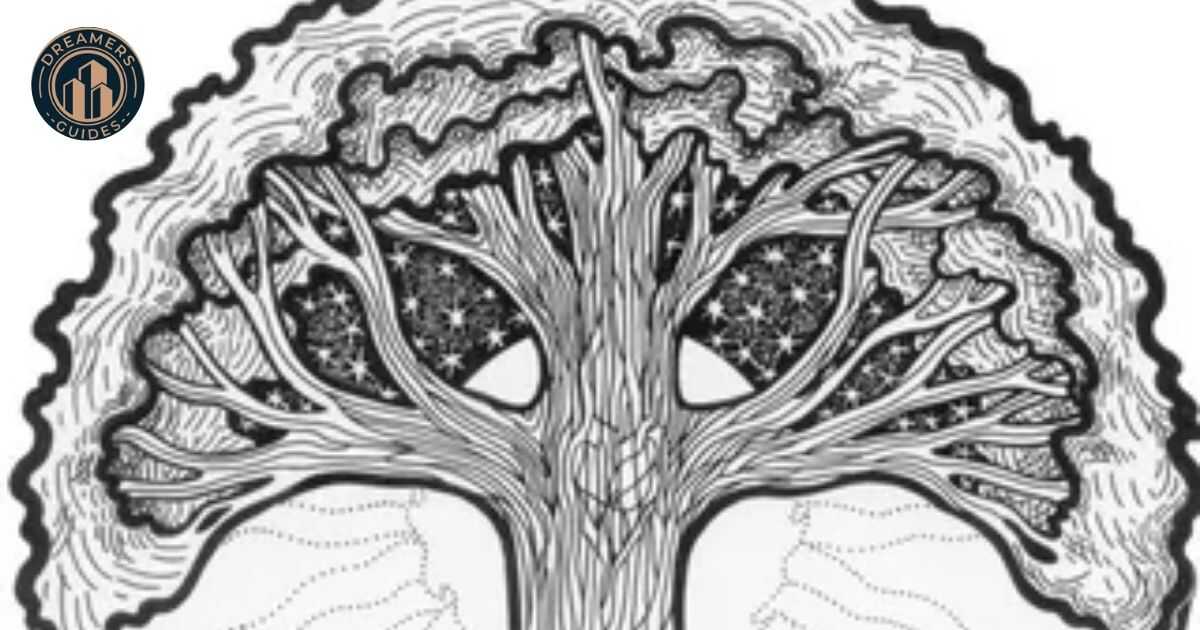
The sun, often associated with masculine energy, represents warmth, vitality, and the active principle. It symbolizes consciousness, reason, and the visible world. In contrast, the moon, typically linked to feminine energy, embodies the intuitive, emotional, and mysterious aspects of existence. It represents the subconscious, imagination, and the hidden realms of our psyche.
Experience in life
Together, the sun and moon create a dynamic equilibrium that reflects the dualities we experience in life:
- Day and night
- Light and darkness
- Action and rest
- Conscious and unconscious
- Rational and intuitive
This celestial pairing has inspired countless myths, legends, and artistic expressions across cultures. In ancient Egyptian mythology, the sun god Ra and the moon god Khonsu represented different aspects of kingship and time. Norse mythology featured Sol and Mani, personifications of the sun and moon, eternally pursued across the sky by wolves.
In literature and poetry, the sun and moon often serve as metaphors for lovers, complementary personalities, or the balance between different aspects of human nature. Shakespeare frequently used sun and moon imagery to evoke themes of love, change, and the passage of time.
Modern interpretations
Modern interpretations of sun and moon symbolism continue to emphasize themes of balance and harmony. In contemporary design and artwork, the combined sun and moon motif is often used to represent:
- The balance between work and rest
- The integration of logical and emotional thinking
- The harmony between masculine and feminine energies
- The cyclical nature of life and time
- The unity of opposites
As a symbol of harmony, the sun and moon remind us of the need for balance in our lives. They encourage us to recognize and integrate different aspects of our personalities and to find equilibrium between action and reflection, outer expression and inner contemplation.
In practices like yoga and meditation, sun and moon symbolism is often used to represent the balance of energies within the body. The concept of “sun and moon breath” (alternating nostril breathing) is a technique aimed at balancing the body’s energy channels and promoting inner harmony.
The enduring appeal of sun and moon symbolism lies in its universality and its ability to encapsulate complex ideas about balance and harmony in a simple, visually striking form.Whether in ancient myths, poetry, or modern logos, the sun and moon serve as powerful reminders of the dynamic equilibrium that underlies all existence.
Read More : Winter Symbolism And Meaning Around The World
9. World Globe
The image of the world globe has emerged as a powerful symbol of harmony in our increasingly interconnected global society. Representing the Earth in its entirety, the globe serves as a visual reminder of our shared home and the unity that exists amid our planet’s incredible diversity.

As a symbol, the world globe embodies several key concepts:
- Global Unity: The globe represents all of humanity as part of a single, interconnected system. It reminds us that despite our differences, we all share one planet and a common fate.
- Diversity: The various continents, oceans, and landmasses depicted on the globe celebrate the rich diversity of cultures, ecosystems, and life forms that exist on Earth.
- Environmental Awareness: In an age of growing environmental concerns, the globe has become a powerful symbol of our planet’s fragility and the need for collective action to protect it.
- International Cooperation: The globe is often used to represent international organizations, global initiatives, and the ideal of nations working together for common goals.
- Knowledge and Exploration: As a teaching tool and symbol of discovery, the globe represents our quest to understand and explore our world.
Symbolism of the world globe
The symbolism of the world globe has been widely adopted in various contexts:
- Corporate Logos: Many international companies use globe imagery in their logos to represent their global reach and universal appeal.
- Educational Institutions: Schools and universities often incorporate globes in their emblems to symbolize comprehensive knowledge and global perspectives.
- Environmental Organizations: Conservation groups frequently use globe imagery to emphasize the interconnectedness of global ecosystems.
- Political Symbols: The United Nations flag features a world map projection, symbolizing international cooperation and global peace.
Unity in diversity
As a symbol of harmony, the world globe encourages us to think beyond our immediate surroundings and consider our place within the larger global community. It promotes a sense of global citizenship, reminding us that our actions can have far-reaching consequences and that global challenges require collaborative solutions.
The globe also serves as a powerful metaphor for unity in diversity. Just as the Earth comprises a vast array of landscapes, climates, and ecosystems that all function as part of a larger whole, humanity too can find harmony in its diversity. In particular, this idea is relevant in multicultural societies like the United States, where the globe symbolizes both the nation’s diversity and its role within the global community.
In the digital age, the symbol of the globe has taken on new significance. The internet and social media have made global communication and connection easier than ever, reinforcing the idea of a “global village.” The globe symbol often appears in logos and interfaces of digital platforms, representing worldwide connectivity and the breaking down of geographical barriers.
As we face global challenges such as climate change, pandemics, and economic interdependence, the world globe stands as a potent reminder of our shared destiny. It encourages us to think globally, act responsibly, and strive for harmony not just within our immediate communities, but across the entire planet we all call home.
Read More : Venus trine Mars Synastry: Everything You Need To Know
10. Unity Candle
The Unity Candle ceremony has become a popular tradition in many Western weddings, particularly in the United States. This simple yet powerful ritual serves as a beautiful symbol of harmony, representing the joining of two lives and two families into a new, unified whole.

The typical Unity Candle ceremony involves three candles:
- Two taper candles, each representing the individual lives of the bride and groom
- One larger pillar candle, known as the Unity Candle
During the ceremony, the bride and groom light the two taper candles. Then, together, the couple uses these individual flames to light the central Unity Candle. This act symbolizes:
- The merging of two individual lives into one shared life
- The joining of two separate families into a new family unit
- The commitment to face life’s challenges together
- The balance of maintaining individual identities while creating a shared future
While the Unity Candle ceremony is most commonly associated with weddings, its symbolism of harmony and unity has led to its adoption in other contexts:
- Family Blending Ceremonies:In cases of remarriage with children, couples can include the kids in a modified Unity Candle ceremony, symbolizing the blending of two families.
- Adoption Ceremonies: Some families use a Unity Candle ritual to symbolize the incorporation of an adopted child into the family.
- Corporate Team Building: Some organizations have adapted the concept for team-building exercises, using it to represent the coming together of individual.
- Conflict Resolution: In certain therapeutic or mediation settings, facilitators might use a Unity Candle-inspired ritual to symbolize reconciliation and a new, harmonious beginning.
Unique identities
As a symbol of harmony, the Unity Candle represents more than just the union of two people. It embodies the idea that individuals can achieve harmony by coming together, combining their strengths while maintaining their unique identities.. The flame of the Unity Candle symbolizes:
- The warmth of love and companionship
- The light of shared wisdom and understanding
- The energy of a shared purpose and commitment
- The continuity of family traditions and the creation of new ones
The Unity Candle tradition has inspired variations that reflect diverse cultural backgrounds or personal preferences. Some couples choose to use sand, wine, or even paint instead of candles, creating their own unique symbol of unity while maintaining the core symbolism of joining lives.
In a broader sense, the Unity Candle serves as a reminder that harmony often involves the coming together of distinct elements to create something new and beautiful. Whether in personal relationships, family dynamics, or larger community contexts, this symbol encourages us to find ways to unite our individual strengths.
The enduring popularity of the Unity Candle in American wedding traditions speaks to our deep-seated desire for connection, unity, and harmony in our most important relationships. It stands as a powerful visual metaphor for the beautiful possibilities that arise when we come together in a spirit of love, commitment, and shared purpose.
11. Celtic Knot

The Celtic Knot, with its intricate interlacing patterns, stands as one of the most recognizable and enduring symbols of harmony from ancient Celtic culture. These elaborate designs, characterized by their continuous looping with no beginning or end, represent eternity and interconnectedness.
Celtic Knots come in various forms, each with its own specific symbolism:
- Triquetra (Trinity Knot): Represents the triple nature of many Celtic concepts (e.g., mind, body, spirit; earth, sea, sky; past, present, future)
- Quaternary Knot: Symbolizes the four elements, four seasons, or four directions
- Love Knot: Represents eternal love and loyalty
- Shield Knot: Used as a protective symbol
- Sailor’s Knot: Symbolizes love and friendship
The intricate, interweaving patterns of Celtic Knots embody several key concepts:
- Eternity: The unbroken lines represent the timeless nature of the spirit and the infinite cycle of life, death, and rebirth.
- Interconnectedness: The intertwining strands symbolize the connection between all things in the physical and spiritual realms.
- Unity: The knots represent the unity of all existence, with each part connected to and influencing the whole.
- Continuity: The unending nature of the knots represents the continuity of life, traditions, and cultural heritage.
In modern times, Celtic Knots have experienced a revival, particularly in Irish-American culture. They have become popular motifs in:
- Jewelry design
- Tattoo art
- Home decor
- Corporate logos (especially for organizations with Irish connections)
- Book covers and illustrations
Read More : Trident Symbolism & Meaning: Ultimate Guide
Web of connections
As a symbol of harmony, the Celtic Knot reminds us of the intricate web of connections that bind us to each other, to our ancestors, and to the natural world. It encourages us to see beyond apparent separations and recognize the underlying unity of all things.
The complexity and symmetry of Celtic Knots also make them appealing as meditative tools. Tracing the paths of a Celtic Knot can be a calming, centering activity, helping to focus the mind and promote a sense of inner harmony.
In contemporary spirituality and personal growth practices, Celtic Knots are often used to represent:
- The integration of different aspects of the self
- The balance between physical, mental, and spiritual realms
- The interconnectedness of all life and the importance of environmental stewardship
- The continuity between past, present, and future generations
The enduring appeal of Celtic Knots lies in their ability to express complex ideas about harmony, eternity, and interconnectedness. Whether worn as jewelry, displayed as art, these ancient symbols continue to resonate with people seeking to express their connection to heritage, nature, and the eternal cycles of life.
In our modern world, often characterized by fragmentation and disconnection, the Celtic Knot serves as a powerful reminder of the underlying harmony and unity that exists beneath the surface of things.
It encourages us to recognize the intricate ways in which our lives are intertwined with others and with the world around us, promoting a more holistic and harmonious way of living.
Read More : 15 Symbols of Forgiveness Around the World
12. Swan
The swan, with its elegant form and serene demeanor, has long been a powerful symbol of harmony across various cultures. Known for its grace, beauty, and symbolic associations with love and fidelity, the swan embodies ideals of balance, transformation, and spiritual purity.
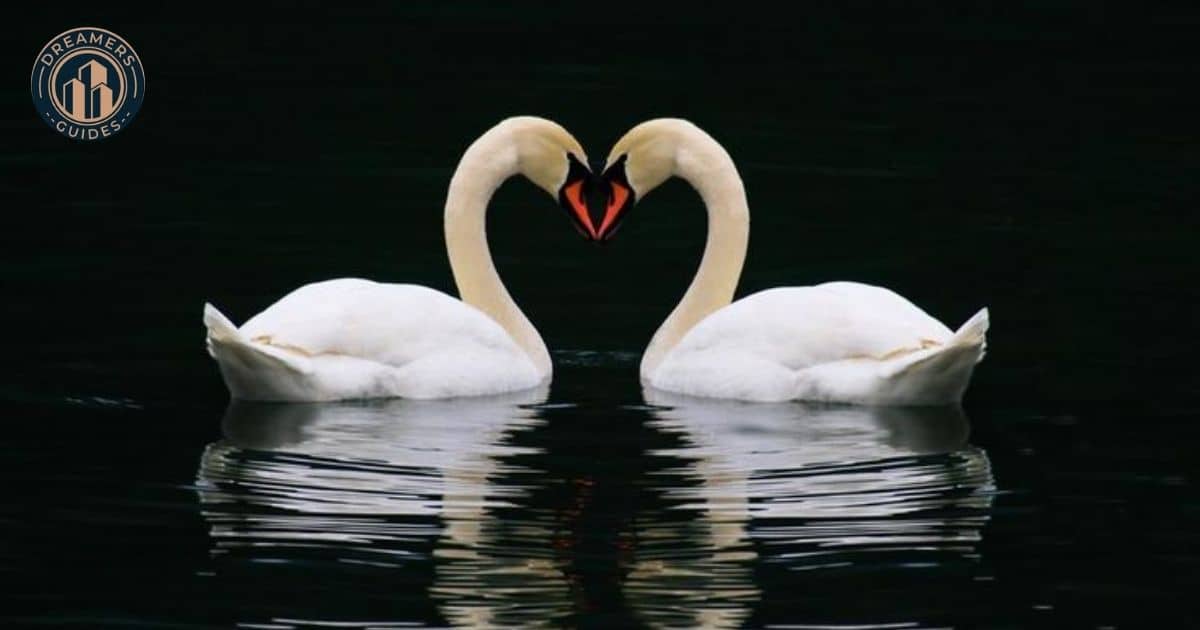
In many cultural traditions, swans hold significant symbolic meaning:
Cultural traditions
- Greek Mythology: Swans were associated with Apollo, god of music and poetry, symbolizing harmony and inspiration.
- Celtic Lore: Swans represented the soul and were believed to have the ability to travel between worlds.
- Hindu Tradition: The swan is associated with Saraswati, goddess of knowledge and the arts.
- Native American Cultures: Some tribes see the swan as a symbol of grace and union.
The swan’s symbolism is multifaceted, representing:
- Grace and Beauty: The swan’s elegant movements on water embody natural grace and aesthetic harmony.
- Fidelity and Monogamy: Swans are known to mate for life, making them symbols of devoted love and partnership.
- Transformation: The “Ugly Duckling” story uses the swan as a metaphor for personal growth and the revelation of inner beauty.
- Purity: The swan’s white plumage is often associated with spiritual and moral purity.
- Balance: The swan’s ability to navigate both water and air symbolizes the balance between different elements and aspects of life.
In Western classical traditions, the swan has played a significant role in art and music:
- Ballet: “Swan Lake” by Tchaikovsky is one of the most famous ballets, using the swan as a central figure of grace and transformation.
- Poetry: Yeats’ poem “The Wild Swans at Coole” uses swans as symbols of unchanging beauty amidst the passage of time.
- Classical Music: Saint-Saëns’ “The Swan” from “Carnival of the Animals” musically depicts the graceful movement of a swan on water.
As a symbol of harmony, the swan encourages us to:
- Move through life with grace and dignity
- Maintain balance between different aspects of our being
- Cultivate fidelity and devotion in our relationships
- Recognize and express our inner beauty
- Strive for spiritual purity and elevated consciousness
In Modern Context
In modern context, the symbolism of the swan continues to be relevant:
- Branding and Logos: Companies use swan imagery to convey elegance, reliability, and timeless quality.
- Tattoo Art: Swan tattoos often represent personal transformation, love, or a connection to water and emotions.
- Interior Design: Swan motifs in decor can symbolize grace, serenity, and refined taste.
- Environmental Conservation: As waterbirds, swans have become symbols of wetland preservation and water purity.
The swan’s association with harmony extends to its role in nature. Swans are often seen as indicators of ecosystem health, their presence signifying clean water and balanced aquatic environments. This connection reinforces their symbolism of natural harmony and the delicate balance of ecosystems.
In personal development and spiritual practices, the swan can serve as a powerful metaphor. Similarly, just as a swan appears calm and graceful on the surface.While paddling vigorously underwater, we can strive to maintain inner calm and outer grace amid life’s challenges.
The enduring appeal of the swan as a symbol of harmony lies in its ability to embody multiple positive qualities grace. Moreover,in art, literature, or personal symbolism, the swan continues to inspire us to seek balance.
Read More : Mushroom Symbolism & Meaning: Ultimate Guide
13. Om Symbol
The Om (or Aum) symbol, originating from Hindu and Buddhist traditions, stands as one of the most profound and universally recognized spiritual symbols in the world. Representing the primordial sound of the universe, Om embodies the concept of cosmic harmony and the unity of all existence.
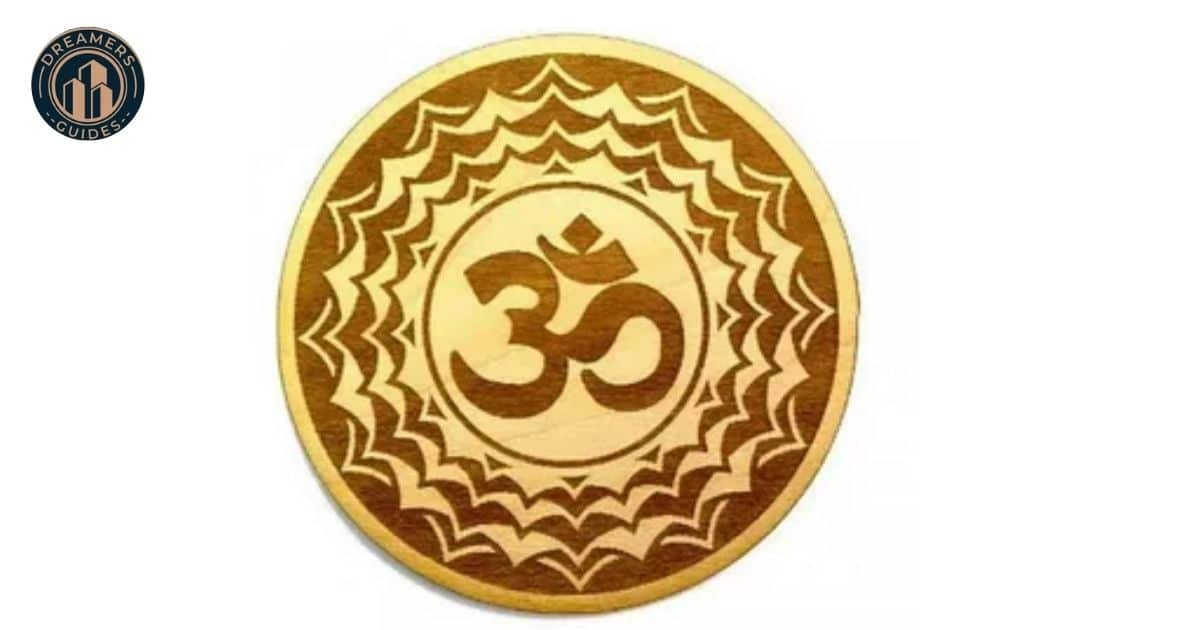
In Sanskrit, Om is considered to be the first sound of creation, encompassing all other sounds and vibrations. The symbol itself is a visual representation of this cosmic sound and carries deep metaphysical significance:
- The large lower curve represents the waking state (jagrat)
- The upper left curve represents the dream state (swapna)
- The upper right curve represents the state of deep sleep (sushupti)
- The small curve above represents the state of absolute consciousness (turiya)
- The dot at the top represents the state of perfect detachment and self-realization
As a symbol of harmony, Om represents:
- The unity of body, mind, and spirit
- The interconnectedness of all beings and all aspects of the universe
- The balance between physical existence and spiritual transcendence
- The cyclical nature of creation, preservation, and dissolution
In Hindu philosophy, the Om sound embodies the essence of the entire universe. Chanting Om aligns the body, mind, and spirit with the universe’s cosmic vibration, promoting inner peace and harmony.
The Adoption of Om In Western Cultures
The adoption of Om in Western cultures, particularly in the United States, has been significant:
- Yoga and Meditation: Om is often chanted at the beginning and end of yoga sessions and used as a focus.
- New Age Spirituality: The symbol has been embraced by various New Age movements as a representation of universal spirituality.
- Music and Sound Healing: Om features in many forms of meditative and world music as well as in sound.
- Fashion and Jewelry: The Om symbol appears on clothing, accessories, and jewelry as a statement of spiritual awareness.
- Tattoos: Many people choose Om tattoos as a personal reminder of their spiritual journey or connection to universal energy.
14. Water
Water, in its various forms and manifestations, stands as one of the most fundamental and universal.Symbols of harmony across cultures worldwide as the source of life and a force of nature that shapes our planet, water embodies fluidity, adaptability, and the continuous flow of existence.

The symbolism of water is rich and multifaceted:
- Purification: In many religions and spiritual traditions, water is used for ritual cleansing and purification.
- Renewal: The cyclical nature of water (evaporation, condensation, precipitation) symbolizes renewal and rebirth.
- Emotion: Water often represents the realm of emotions and the subconscious mind.
- Adaptability: Water’s ability to take the shape of its container symbolizes flexibility and adaptability.
- Healing: Many cultures associate water with healing properties, encompassing both physical and spiritual dimensions.
- Unity: As a substance that connects all life on Earth, water symbolizes the interconnectedness of all things.
As a symbol of harmony, water teaches us several important lessons:
- Balance: Like water finding its level, we can strive for balance in our lives.
- Persistence: Water’s ability to carve through rock over time reminds us of the power of persistence.
- Flow:Water’s natural flow encourages us to embrace the rhythm of life, rather than constantly resisting it.
- Reflection: Still water acts as a mirror, symbolizing self-reflection and introspection.
Modern American Culture
In modern American culture, the symbolism of water has been embraced in various ways:
- Environmental Conservation: Water has become a powerful symbol in environmental movements, representing the need for ecological harmony and conservation.
- Wellness and Spa Culture: The use of water in spas and wellness centers draws on its associations with purification and renewal.
- Meditation and Mindfulness: Meditation practices often use the sound of flowing water to promote relaxation and mental clarity.
- Landscape Design:Garden and public space designers use water features to create harmonious environments and connect people with nature.
- Corporate Branding: Many companies use water imagery in their branding to convey ideas of purity, refreshment, or environmental responsibility.
The concept of “going with the flow,” derived from water’s natural behavior, has become a popular philosophy in personal development and stress management.
In architecture and urban planning, the integration of water features is often used to create harmonious spaces that blend the natural and built environments. Examples include:
- Reflecting pools in public squares
- Urban rivers and canals as community focal points
- Green infrastructure effectively manages stormwater while simultaneously creating beautiful landscapes.
As a symbol of harmony, water reminds us of our deep connection to the natural world. It encourages us to:
- Adapt to changing circumstances with grace
- Seek emotional balance and clarity
- Recognize our interconnectedness with all life
- Approach challenges with persistence and flexibility
- Regularly engage in practices of renewal and purification
Read More : Summer Symbolism in Cultures and Arts Around The World
In the diverse tapestry of modern American culture, symbols of harmony from various traditions have found new life and meaning. These symbols often intersect and blend, creating a rich symbolic language.It reflects the multicultural nature of American society.
Various aspects of American life
Here’s how these harmony symbols interact and influence various aspects of American life:
- Art and Design
- Fusion art incorporating elements like Yin-Yang, mandalas, and Celtic knots
- Jewelry designs combining multiple harmony symbols
- Tattoo art blending different cultural symbols into personalized designs
- Wellness and Personal Growth
- Yoga studios using a mix of Eastern and Western symbols (Om, Tree of Life, etc.)
- Meditation apps incorporating diverse visual and audio cues for relaxation
- Self-help books drawing on various cultural wisdom traditions
- Corporate Branding
- Companies using globe imagery alongside other harmony symbols to represent global unity and environmental responsibility
- Wellness brands incorporating water symbolism with Eastern-inspired motifs
- Education
- Multicultural curricula using diverse symbols to teach about global cultures
- Environmental education programs using water and tree symbolism
- Social Movements
- Peace movements adopting symbols like the dove alongside newer icons
- Environmental groups blending globe imagery with traditional nature symbols
- Popular Culture
- Movies and TV shows exploring themes of balance using various cultural symbols
- Music incorporating diverse spiritual and harmonic concepts
- Digital Culture
- Emoji and icon sets including a variety of harmony symbols
- Social media filters and effects featuring mandala patterns or nature elements
- Architecture and Urban Planning
- Public spaces designed to incorporate elements like water features and tree motifs
- Buildings integrating feng shui principles with modern design
The blending of these symbols reflects several key aspects of modern American culture:
- Cultural Diversity: The incorporation of symbols from various traditions celebrates America’s multicultural heritage.
- Globalization: The adoption of international symbols reflects America’s place in a globalized world.
- Spiritual Eclecticism: Many Americans draw from multiple spiritual traditions, reflected in the mixing of religious and philosophical symbols.
- Environmental Consciousness: The prominence of nature-based symbols speaks to growing environmental awareness.
- Technological Integration: Traditional symbols find new expression through digital media and technology.
Some challenges and opportunities
This intersection of harmony symbols also presents some challenges and opportunities:
- Cultural Appropriation Concerns: The adoption of symbols from various cultures can sometimes lead to issues of cultural appropriation, necessitating respectful and informed use.
- New Syncretic Meanings: As symbols combine, they often take on new, syncretic meanings that reflect uniquely American interpretations.
- Educational Opportunities: The presence of diverse symbols offers chances for cross-cultural learning and understanding.
- Personal Expression: The variety of available symbols allows individuals to create personalized representations of harmony and balance.
- Commercial Adaptation: Businesses often adapt these symbols for commercial purposes, sometimes leading to debates about commodification of spiritual concepts.
As American society continues to evolve, so too will its use and interpretation of harmony symbols. This dynamic interaction of diverse symbolic traditions reflects the ongoing American experiment in creating unity from diversity, and in finding new ways to express age-old human desires for balance, peace, and harmony.
This journey through 14 iconic symbols of harmony highlights their vital role in bridging ancient wisdom with modern aspirations. From the cosmic balance of Yin and Yang to the adaptable flow of water, each symbol provides unique insights.
Read More : Mars in Leo : The Great Performer
Conclusion
This journey through 14 iconic symbols of harmony highlights their vital role in bridging ancient wisdom with modern aspirations.From the cosmic balance of Yin and Yang to the adaptable flow of water, each symbol offers insights into harmony and our quest for balance in a chaotic world.
As we move forward in an era of rapid technological change,these ancient symbols of harmony remain remarkably relevant. They continue to evolve, finding new expressions in digital media, modern art, and popular culture.
The enduring power of these symbols lies in their ability to speak to fundamental human needs and aspirations.In a world marked by conflict, they remind us of our shared humanity.
As individuals, we can draw inspiration from these symbols in our daily lives:
- Use them as focal points for meditation or reflection.
- Incorporate their lessons into our approach to challenges and relationships.
- Display them in our living or working spaces as reminders of our aspirations for harmony.
- Share their meanings with others, fostering understanding and connection.
In conclusion, a rich tapestry of wisdom, beauty, and inspiration.By understanding and embracing these symbols, we can work towards creating more harmonious lives for ourselves. As we face the complexities of modern life, let these timeless symbols guide us towards greater understanding, unity, and harmony.
Related Articles….

James Michael
James Michael is the creative force behind Dreamers Guides, dedicated to exploring the rich symbolism and spirituality of diverse cultures. With a passion for uncovering ancient wisdom, He crafts insightful narratives that connect beliefs and foster understanding among readers worldwide.